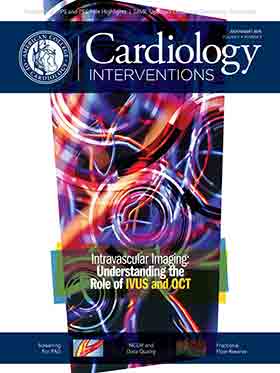Here are nine key points to remember from the US Preventive Services Task Force (USPSTF) Recommendation Statement about screening for peripheral artery disease (PAD) and cardiovascular disease risk assessment with the ankle-brachial index (ABI).
PAD is a common manifestation of atherosclerosis in the lower limbs. In severe cases, it can impair walking and lead to tissue loss, infection or amputation.
Patients with PAD are at increased risk for cardiovascular disease events. This likely represents the systemic nature of atherosclerosis.
The USPSTF reviewed the evidence on whether screening for PAD with ABI in asymptomatic adults reduces morbidity or mortality from PAD or cardiovascular disease.
The USPSTF concluded the current evidence is insufficient and that a balance between benefit and harms of screening for PAD in asymptomatic adults cannot be assessed.
Two good-quality studies showed no benefit of using ABI to manage daily aspirin therapy in unselected patients. Also, two studies showed no benefit from prescribed exercise therapy, based on screening ABI results.
While no studies addressed the harms of screening, the potential exists for overdiagnosis, labeling and opportunity costs. There is also potential risk for exposure to gadolinium or contrast dye during confirmational tests.
When deciding whether to screen for PAD with the ABI in asymptomatic patients, clinicians should consider the potential preventable burden of PAD, the potential harms of screening, and other methods for assessing cardiovascular disease risk (e.g., blood pressure, diabetes, lipid screening).
Large, population-based randomized trials of screening vs. no screening are needed to determine whether screening for PAD with ABI will improve clinical outcomes. While one large population-based study in Denmark has published preliminary results in favor of screening, it was limited to men aged 65-74 years only and it also included screening for abdominal aortic aneurysms and high blood pressure. Two other studies of a screening “bundle” are ongoing.
The ACC and American Heart Association have previously released a joint practice guideline recommending ABI screening among high-risk patients, including patients 65+ years of age, patients 50+ years of age with other atherosclerotic risk factors or a family history of PAD, and adults <50 years of age with diabetes and at least one other atherosclerotic risk factor.
This key points article was authored by Geoffrey D. Barnes, MD, MSc, FACC, a cardiologist and vascular medicine specialist at the University of Michigan Health System in Ann Arbor, MI.
Clinical Topics:
Vascular Medicine, Atherosclerotic Disease (CAD/PAD)
Keywords:
ACC Publications, Cardiology Interventions, Ankle Brachial Index, Peripheral Arterial Disease, Advisory Committees, Risk Assessment
< Back to Listings


